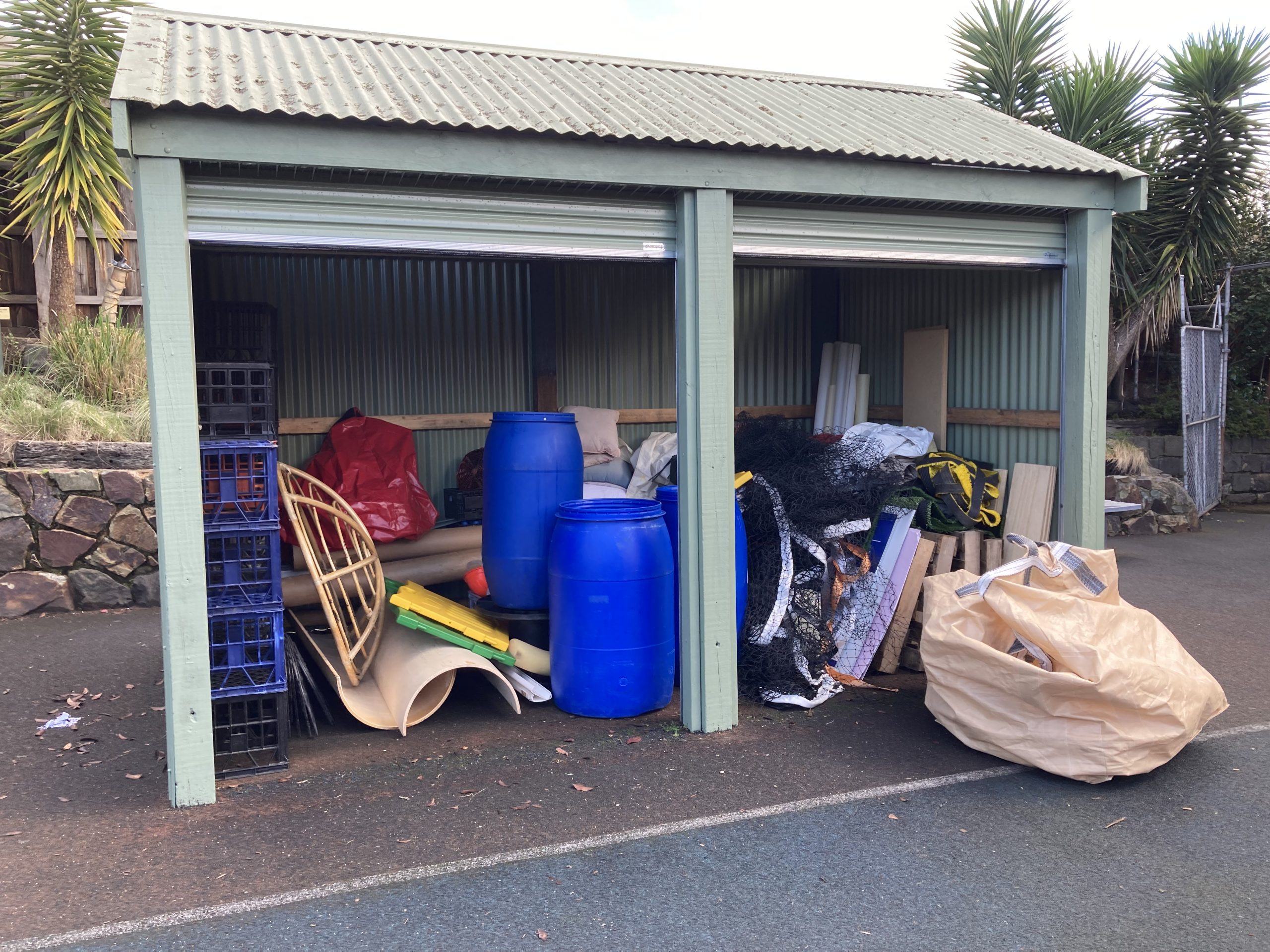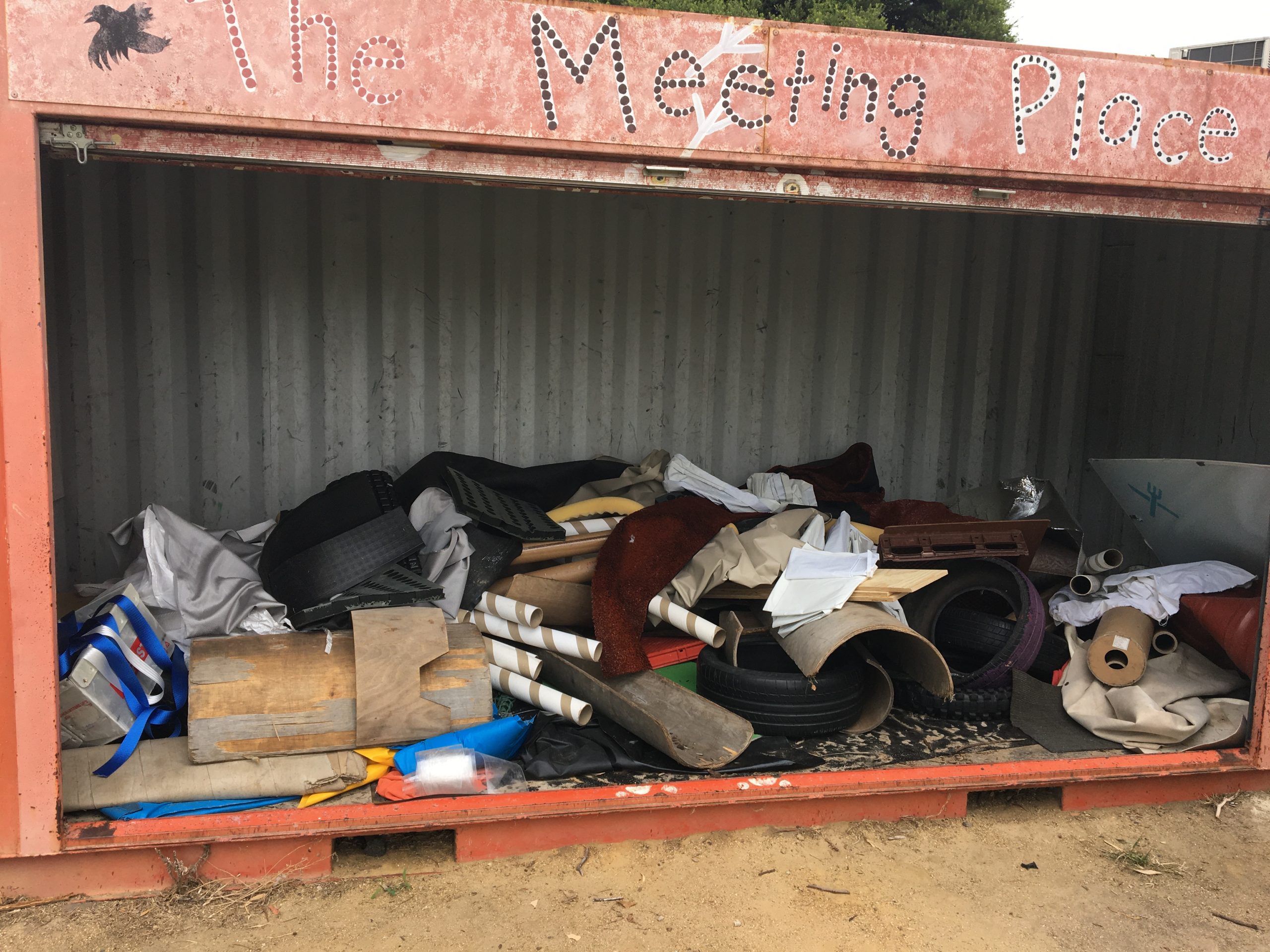Loose Parts
School Yard Loose Parts Collections
Loose Parts programs (via our parent company Green Hat Workshop)
What are loose parts?
Loose Parts is the name given to loose, tactile materials and everyday objects collected and subverted to serve collectively as a play resource.
Loose Parts are moveable pieces, generally of a disposable nature, that enable play-ers to create and recreate their own environments, totems and locus of play.
Play that emerges through engagement with these types of unspecified objects is free of expectation and provides opportunities to create play, rather than simply conduct play. In contemporary Australia, humans engage less and less with these types of ambiguous artefacts, and experience reduced exposure to truly self-directed experiences with objects that don’t carry an implied use.
Loose parts have been found to improve school yard culture and to reduce incidents of antisocial behaviour. They do this by encouraging cross age interaction, the variation of gross motor movement and reducing sedentary behaviour, and by increasing the variety of play, including dramatic play and self-directed STEM-play. Loose Parts increase opportunities for valuable interpersonal and social skills by introducing opportunities for independent negotiation, compromise, resilience and collaboration… and they’re also a great deal of fun.
What are Loose Parts?
Loose Parts is the name given to loose, tactile materials and everyday objects collected and subverted to serve collectively as a play resource.
Loose Parts are moveable pieces, generally of a disposable nature, that enable play-ers to create and recreate their own environments, totems and locus of play.
Play that emerges through engagement with these types of unspecified objects is free of expectation and provides opportunities to create play, rather than simply conduct play. In contemporary Australia, humans engage less and less with these types of ambiguous artefacts, and experience reduced exposure to truly self-directed experiences with objects that don’t carry an implied use.
Loose parts have been found to improve school yard culture and to reduce incidents of antisocial behaviour. They do this by encouraging cross age interaction, the variation of gross motor movement and reducing sedentary behaviour, and by increasing the variety of play, including dramatic play and self-directed STEM-play. Loose Parts increase opportunities for valuable interpersonal and social skills by introducing opportunities for independent negotiation, compromise, resilience and collaboration… and they’re also a great deal of fun.
Introduction and Maintenance
A Loose Parts collection is best introduced to schools where there is an existing liberal, rights-based culture.
Clear communication across a school community and a shared philosophy and purpose are important in their introduction and extended life. The broad effect on school culture and the largely contextual nature of play with loose parts, equally requires that its management is contextual also, and therefore we suggest it be guided by a school-wide Play Policy.

Without a Robust philosophy of childhood and clearly expressed beliefs in the role of the school as an institution of child development, schools are at the mercy of the most fearful in their community to dictate their policies; the most fearful parent, the most overzealous caretaker, the most frightened supervisor and the most officious and ill-informed health and safety inspector…
Michael Follett (2017)
Selecting Parts

The consideration of the range of ways that parts behave or their affordances*, is vital when selecting Loose Parts. This cannot be done in isolation and must consider the environment, the experience of the play-ers and more.
Reverse Art Truck have a great deal of experience curating loose parts for a range of purposes and our Education Manager, Cam is happy to work with staff and school representatives to choose the right parts for the right playground and to develop a strategy for introducing different parts.
Feel free to contact him at [email protected]
Cam is a trained Primary School STEM specialist with over a decade’s experience in classrooms and more than 12 years as an edupreneaur providing play-based learning activities, the last 8 of which he has curated and provided loose part play, both in schools and in public spaces (More on Cam’s Work HERE).
Typical loose parts may include:
- netting
- cloth
- curved wood
- small pallets
- plastic pallets
- traffic cones
- core flute sheets
- rope and webbing strap
- tyres of all types
- foam shapes
- synthetic grass
- sails
- barrels of different sizes
- Large plastic and cardboard tubes
- carry-on suitcases
- bread crates
- milk crates
- cushions
- 15lt water bottles
- big bags
*Affordance
Noun
A potential transaction that is made possible by a given object or environment.
Affordance refers to the perceived or potential action possibilities or opportunities for interaction that an object, environment, or system provide to an individual, referring to the way an object or environment “affords” or allows certain actions or behaviors.